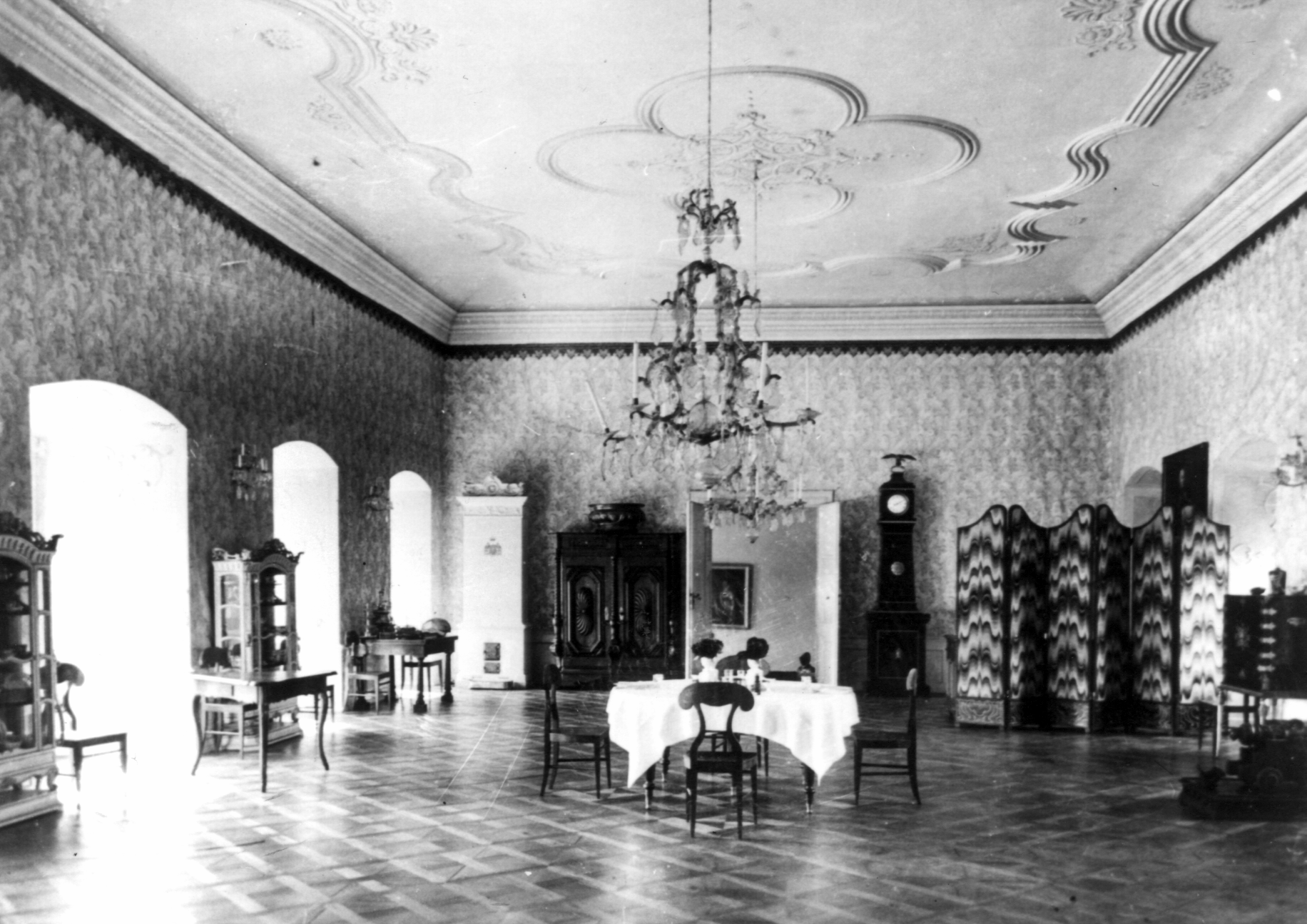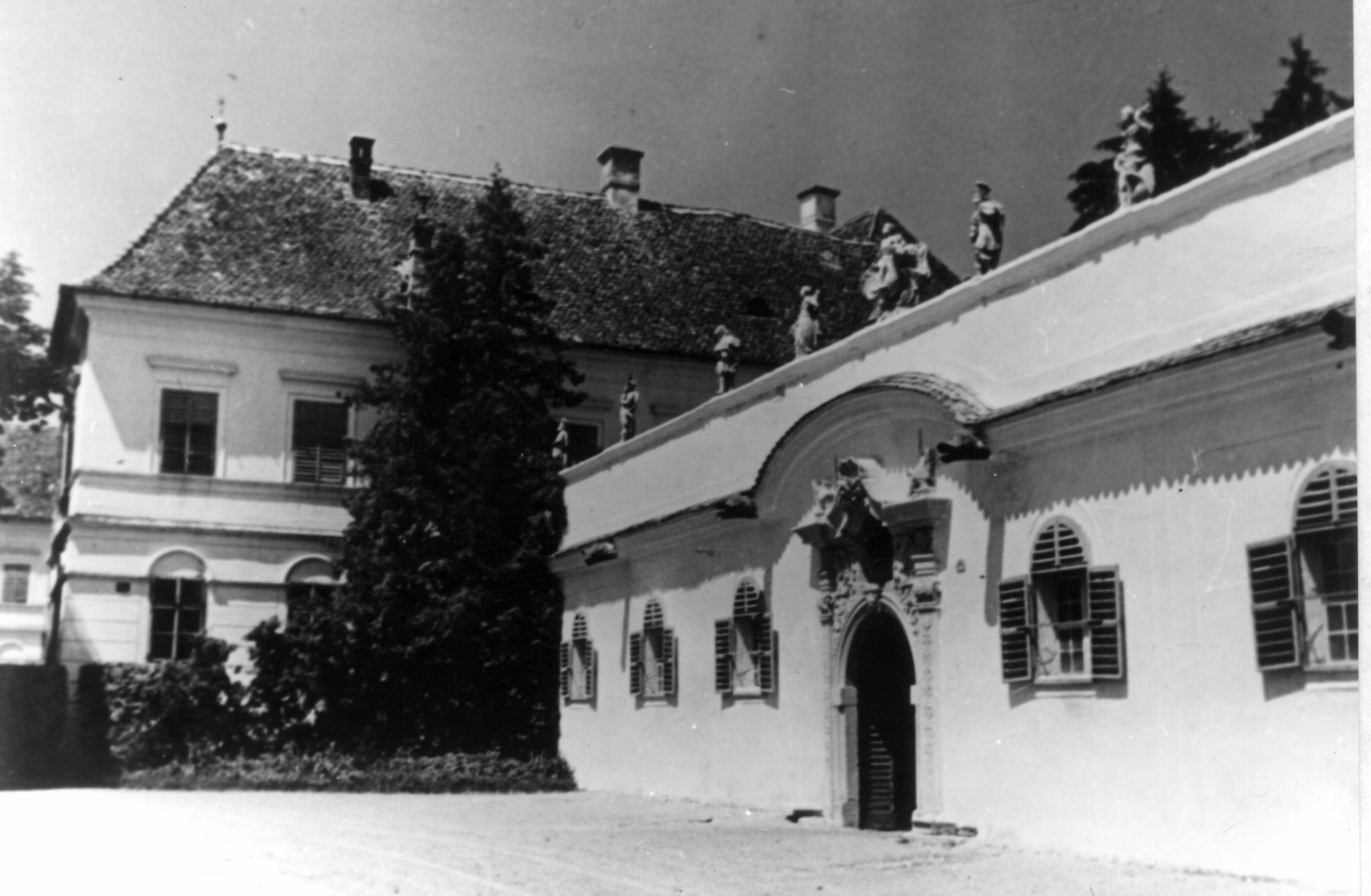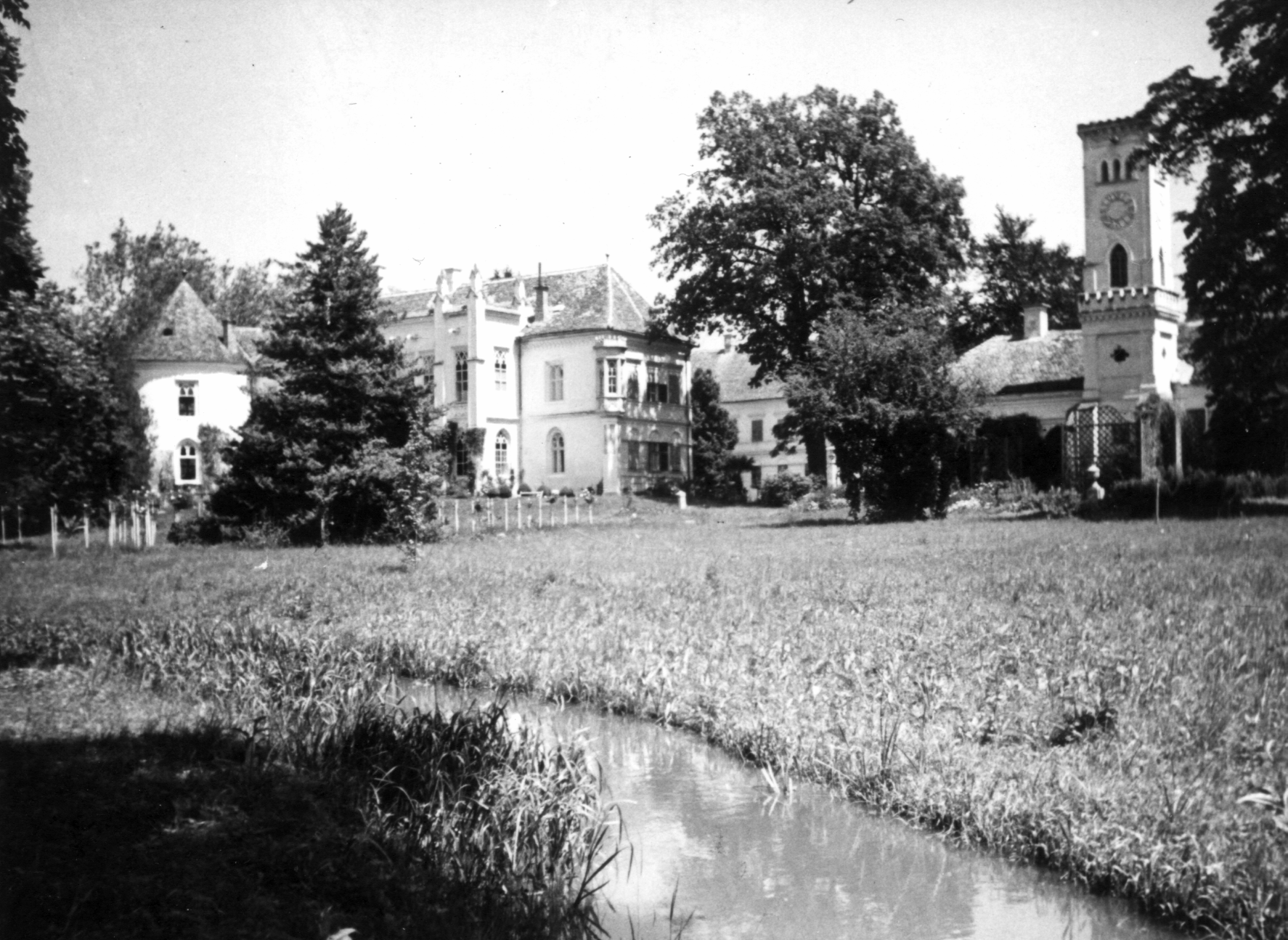Brief history of Bánffy Castle, Bonțida
1263 Bonţida was documented for the first time.
1387 The history of the Bánffy of Losonc family and that of Bonţida has intermingled for several centuries. Dénes, the son of Tamás Losonci, received the property right from King Sigismund.
After 1640: There were already two Bánffy mansions in Bonţida – the one built on the site of the present castle was inherited by Dénes Bánffy (II), county governor of Cluj and Dăbâca, brother in-law of Prince Mihály Apafi Ist.
1668–74 The old mansion was strengthened with a rectangular curtain wall, reinforced at the corners with circular bastions.
1674 After the execution of Dénes Bánffy, the castle was inherited by the future governor György (III), who continued the construction works between 1681-1704.
1704–1711 During the War of Independence, the castle was alternately occupied by the two forces, and was severely damaged.
1711–1735 The new owner was György Bánffy (IV), son of the former governor. The Southern wall was rebuilt and the Southern bastions were restored.
1735 The Castle was inherited by Dénes (IV), the 12 year old son of György Bánffy (IV). He grew up at the Court of Vienna, returning in 1747 as Master of the Horse to Maria Theresa and he began an extensive Baroque transformation of the castle, also establishing the French parkland.
1747–51 In front of the eastern defence wall which already contained stables and annexes, a new “U” shaped wing was built that included Stables, Riding School, the Carriage rooms and other additional buildings that reflected the Viennese taste of the owner who also restored the Renaissance Ensemble.
1784–86 The son of Dénes (IV), György (V), also Governor, continued the work of restoration and construction. The two entrances to the main building were completed and decorated with Baroque sculptures.
1820’s J ózsef Bánffy, the castle’s heir, demolished the Renaissance gate tower, uniting the Baroque and Renaissance courts. In 1830’s, the façades of the two Eastern wings were remodeled to classical style. Also, during this period, the Baroque garden was transformed into a romantic park.
1855 József Bánffy changed the Western facades of the main building and kitchen into romantic (Neo-Gothic) style, adding to the latter the clock-tower.
1858–1944 J ózsef Bánffy sold the castle to Baron Miklós Bánffy, governor of Alba de Jos county, his heirs being György and also the politician and writer Miklós Bánffy.
1935–37 Miklós Bánffy restored the Western facade and N W bastion.
1944 The retreating German troops set the castle on fire, taking revenge for the secret negotiations in Bucharest between the Count and the allies. The main building, its interiors, the library and archive were damaged.
After 1947 The nationalized building was continuously degrading, the Riding School building collapsed (1950’s), the remaining buildings were used for different purposes: shops, social housing, stables, warehouses, local agricultural company, etc.
After 1959 The State began the restoration of the castle – the main building was given concrete ring beams, reinforced concrete ceilings and a new roof. The works were not completed, the castle was abandoned and vandalized, the building materials within the castle were removed by the local community.
1999 Following the nomination made by Transylvania Trust (TT), the castle was included in the World Monuments Watch List of 100 Most Endangered Sites.
1999 A bilateral State Agreement was signed between Romania and Hungary. In the following period, with Romanian state funds, about 2/3 of the roof of the main building was reconstructed.
2001 The Built Heritage Conservation Training Programme was implemented and the former kitchen building was the first to be restored under its banner. The TT became responsible for the security and administration of the castle as well as for attracting the restoration funds.
2003 The TT signed a long term lease agreement for the castle with the authorities.
2005 The official opening of the Built Heritage Conservation Training Centre.
2008 Countess Katalin Bánffy, daughter of Miklós Bánffy was given back the castle and leased it to the Transylvania Trust for 49 years.
2008 The International Built Heritage Conservation Training Centre was awarded the highest European Union and Europa Nostra prize in Cultural Heritage for education, training and awareness raising.
 |  |  |  |  |  |  |
|---|---|---|---|---|---|---|
 |  |  |  |
